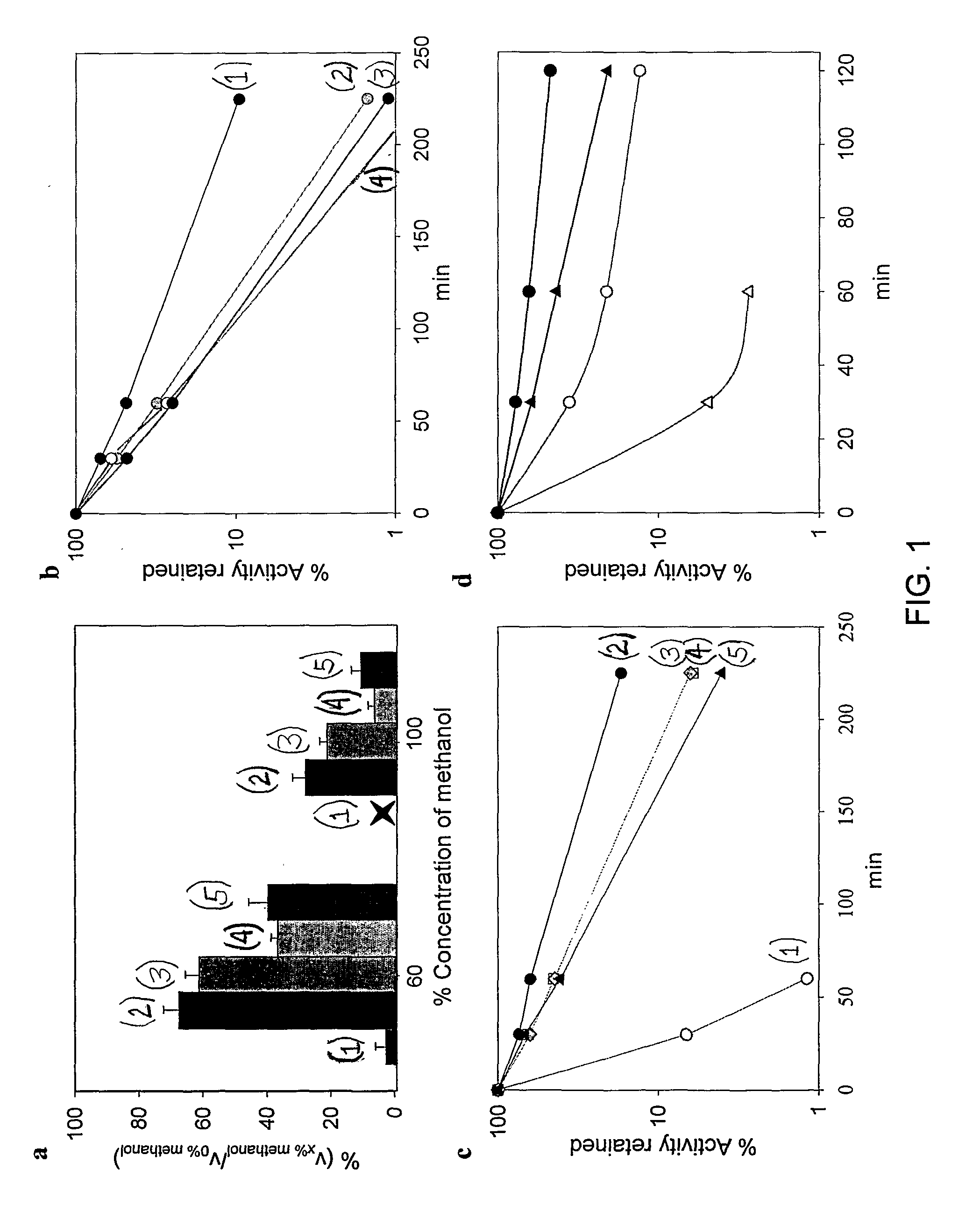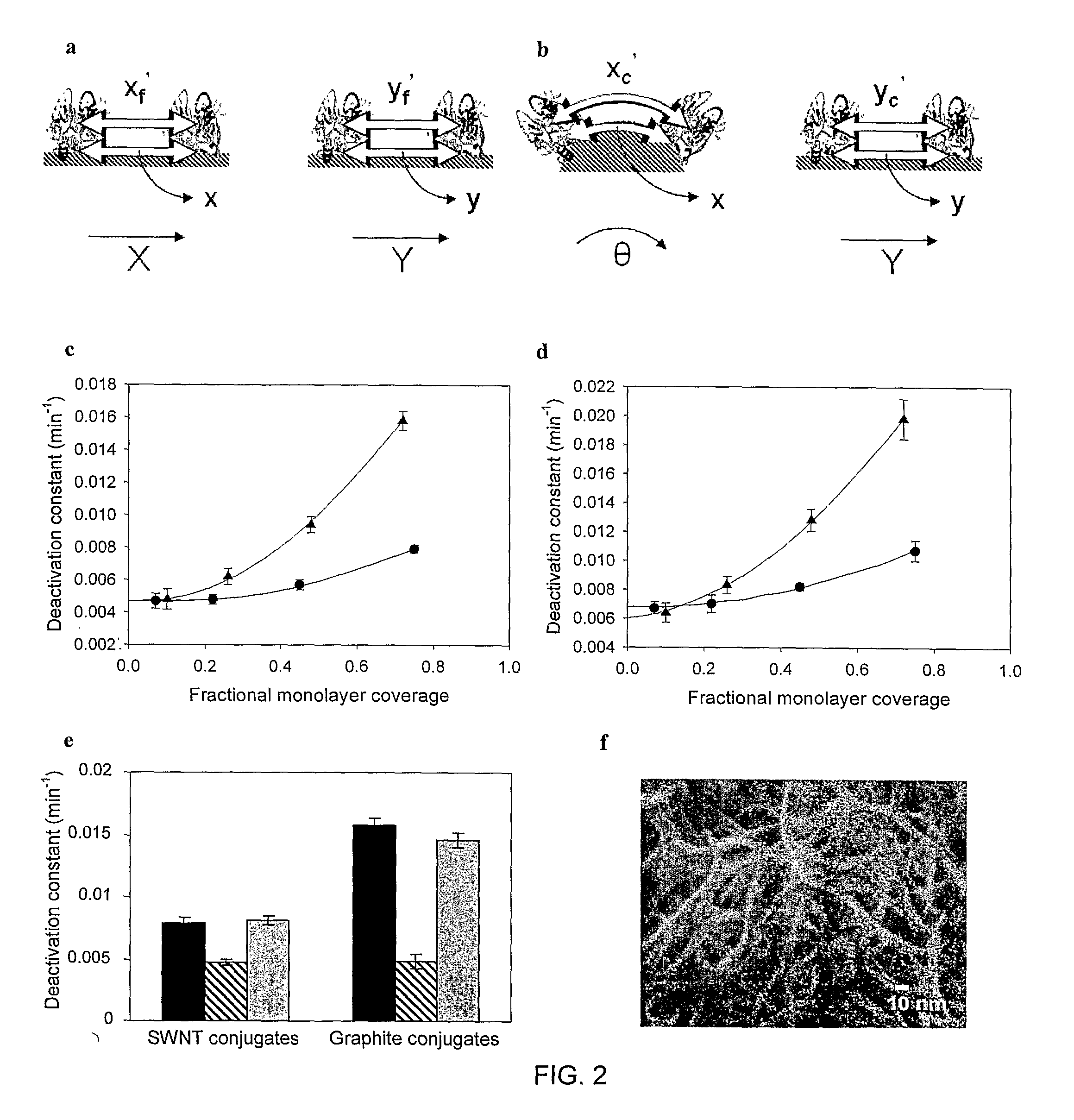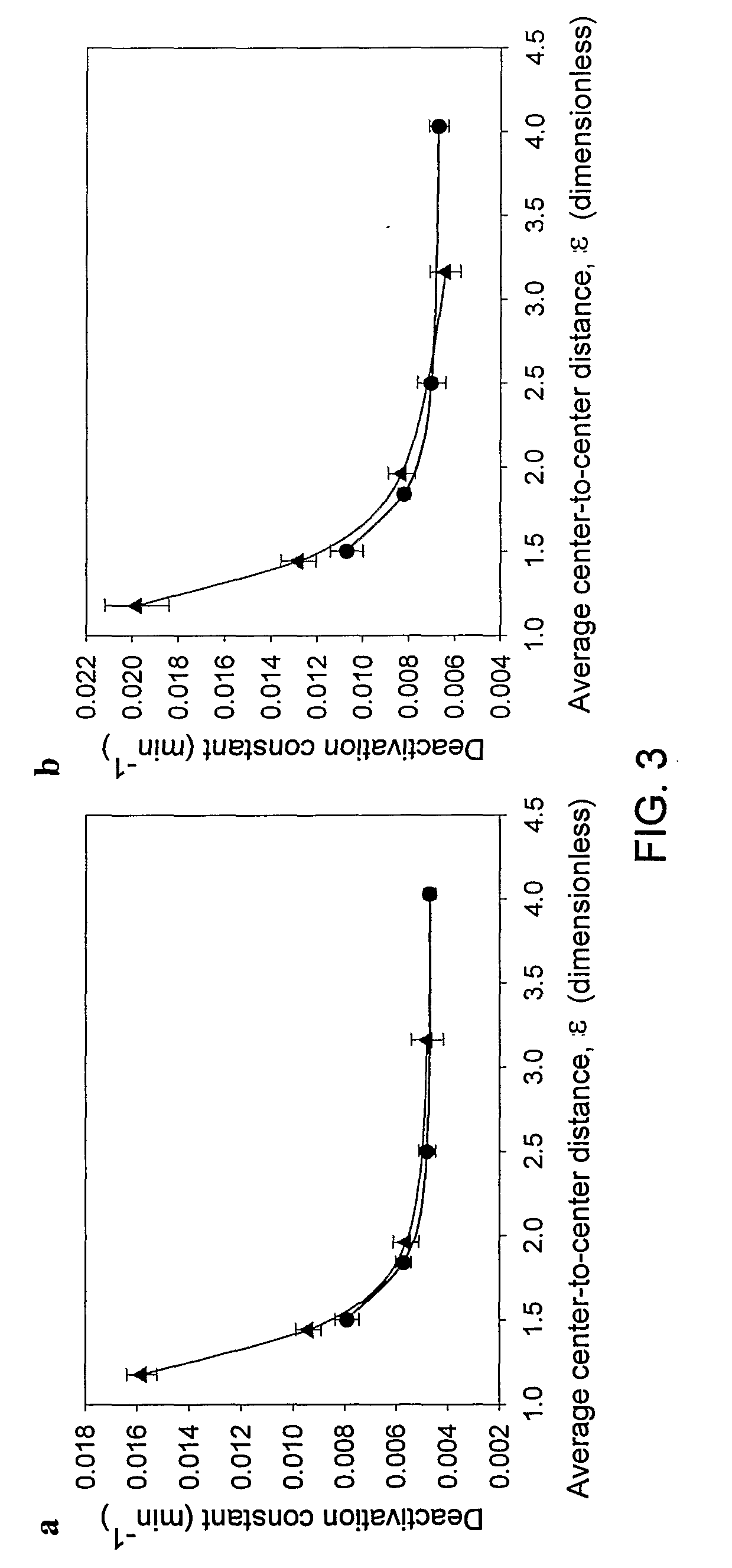Enhanced stability of proteins immobilized on nanoparticles
a technology of nanoparticles and proteins, applied in the field of enhanced stability of proteins immobilized on nanoparticles, can solve the problems of poor stability of biomolecules in harsh environments, and achieve the effect of greater stability of bound proteins or enzymes and enhanced stability of compositions
- Summary
- Abstract
- Description
- Claims
- Application Information
AI Technical Summary
Benefits of technology
Problems solved by technology
Method used
Image
Examples
Embodiment Construction
[0024]A description of preferred embodiments of the invention follows.
[0025]A core aspect of this invention is the formation of nanoparticles with proteins or enzymes attached to their external surfaces. These nanoparticles can be formed by a variety of techniques and from a variety of materials known in the art of nanoparticle fabrication. The nanoparticles that are suitable in this invention generally include nanomaterials, e.g., nanotubes, nanosheets, nanoporous materials, such as single-walled carbon nanotubes, multi-walled carbon nanotubes, gold nanoparticles or other metallic, semi-conducting, or metal oxide nanoparticles, quantum dots, functionalizes silica. Single-walled carbon nanotubes are preferred.
[0026]Proteins which can be used in this invention include proteins which possess a biological activity. A biological activity includes commercially relevant activities as a diagnostic, therapeutic, enzymatic or other protein activity. Examples of proteins include immunoglobuli...
PUM
| Property | Measurement | Unit |
|---|---|---|
| temperature | aaaaa | aaaaa |
| temperature | aaaaa | aaaaa |
| pH | aaaaa | aaaaa |
Abstract
Description
Claims
Application Information
 Login to View More
Login to View More - R&D
- Intellectual Property
- Life Sciences
- Materials
- Tech Scout
- Unparalleled Data Quality
- Higher Quality Content
- 60% Fewer Hallucinations
Browse by: Latest US Patents, China's latest patents, Technical Efficacy Thesaurus, Application Domain, Technology Topic, Popular Technical Reports.
© 2025 PatSnap. All rights reserved.Legal|Privacy policy|Modern Slavery Act Transparency Statement|Sitemap|About US| Contact US: help@patsnap.com



